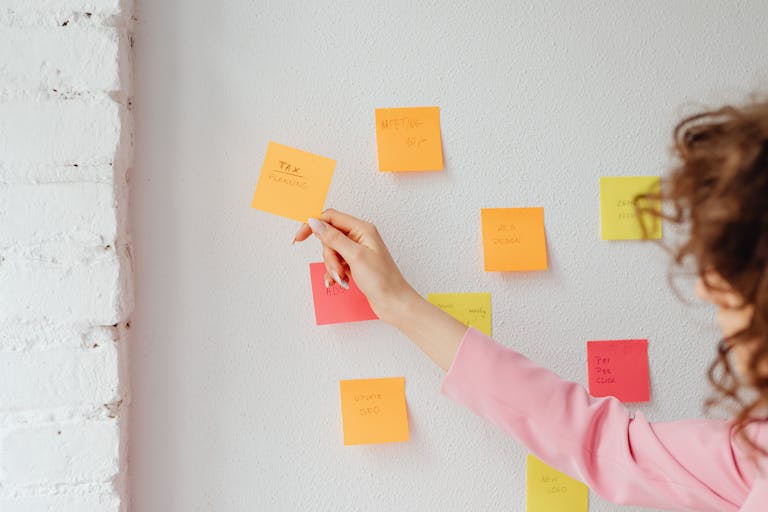In today’s fast-paced world, it’s easy to get caught up in the rush of daily tasks and responsibilities. Whether you’re juggling work, personal commitments, or simply the demands of life, it can sometimes feel like there’s no time to slow down. That’s where mindfulness comes in.
Mindfulness is the practice of being fully present in the moment, paying attention to your thoughts, feelings, and surroundings without judgment. It’s a powerful tool for reducing stress, increasing focus, and improving overall well-being. By incorporating mindfulness techniques into your daily routine, you can experience greater peace of mind and a more balanced life.
In this article, we’ll explore several simple mindfulness techniques that can help you reduce stress and enhance your mental clarity throughout the day.

1. Focused Breathing
One of the simplest and most effective mindfulness techniques is focused breathing. By taking a few minutes each day to focus solely on your breath, you can instantly calm your mind and reduce feelings of anxiety.
Here’s how to practice focused breathing:
- Find a quiet space and sit comfortably.
- Close your eyes and take a deep breath in through your nose, allowing your lungs to fill with air.
- Exhale slowly through your mouth, releasing any tension.
- Continue breathing deeply and slowly for a few minutes, focusing your attention entirely on your breath.
This simple practice can be done anywhere—whether at your desk, while waiting for an appointment, or even while commuting. It helps to bring your attention back to the present moment and release any stress or distractions.
2. Body Scan Meditation
A body scan meditation is another mindfulness technique that helps you become more aware of the physical sensations in your body. This practice encourages relaxation and can help you identify areas of tension or discomfort that need attention.
To practice a body scan:
- Sit or lie down in a comfortable position.
- Close your eyes and take a few deep breaths to relax.
- Slowly bring your attention to your toes. Notice any sensations or feelings you may have in that area.
- Gradually move your attention up your body, scanning each part of your body (ankles, calves, knees, etc.), noticing any sensations or tension in each area.
- If you notice any tension, take a deep breath and imagine releasing it as you exhale.
- Continue scanning your entire body until you reach the top of your head.
The body scan is a great way to ground yourself and become more aware of how your body is feeling. It can help you release physical tension, reduce stress, and cultivate a deeper connection between your mind and body.
3. Mindful Walking
Walking is something most of us do every day, but it’s often done mindlessly—while checking our phones, thinking about tasks, or rushing from one place to another. Mindful walking is the practice of bringing your full attention to the act of walking.
To practice mindful walking:
- Find a quiet space, preferably outdoors, where you can walk without distractions.
- Focus on the sensation of your feet touching the ground with each step. Pay attention to the feeling of your body moving through space.
- As you walk, notice the sights, sounds, and smells around you. Be present in the moment, allowing yourself to fully experience the environment.
- If your mind starts to wander, gently bring your attention back to the feeling of walking and the present moment.
Mindful walking is a great way to bring mindfulness into your daily routine, especially if you find yourself walking to and from work, running errands, or taking a break during the day.
4. Mindful Eating
Eating is another everyday activity that can be transformed into a mindfulness practice. Mindful eating involves paying full attention to your food—the colors, textures, smells, and flavors—while eating without distractions.
Here’s how to practice mindful eating:
- Before you eat, take a moment to appreciate the food in front of you. Notice its appearance, smell, and texture.
- As you eat, take small bites and chew slowly, savoring each bite.
- Put down your utensils between bites and take a few moments to notice how the food makes you feel. Are you satisfied? Are you enjoying the taste?
- Avoid distractions, such as your phone or TV, while eating. Instead, focus solely on the experience of eating.
Mindful eating can help you develop a healthier relationship with food, improve digestion, and increase your enjoyment of meals.
5. Gratitude Practice
Incorporating gratitude into your daily routine is a powerful way to shift your mindset and cultivate a sense of mindfulness. By focusing on the positive aspects of your life, you can increase your overall sense of well-being and reduce stress.
To practice gratitude:
- Set aside a few minutes each day to reflect on the things you are grateful for.
- You can do this in the morning to start your day on a positive note, or at night before bed to reflect on the day’s blessings.
- Write down three things you are grateful for. They can be big or small—anything from your health to a kind gesture from a friend.
- Take a moment to truly feel gratitude for these things.
Practicing gratitude helps you stay present and appreciate the positive aspects of your life, which can improve your mood and reduce feelings of stress.
Q: How long should I practice mindfulness each day?
A: Start with just 5–10 minutes a day and gradually increase the time as you become more comfortable with the practice. Even short mindfulness sessions can have a positive impact on your well-being.
Q: Can mindfulness help with stress management?
A: Yes! Mindfulness is proven to reduce stress by helping you focus on the present moment and release negative thoughts and anxiety. It encourages relaxation and improves emotional regulation.
Incorporate Mindfulness Into Your Life
Start by trying one or two of the mindfulness techniques mentioned above. With consistent practice, you can reduce stress, increase your focus, and enjoy a more peaceful and balanced life.

I’m EKBAL HOSSAIN MONDAL, the creator of SmartSolveTips.com — a blog dedicated to helping people improve productivity, avoid digital burnout, and live better online. With years of hands-on experience in self-development and digital wellness, I write practical tips and tools to help you stay focused and thrive in a fast-paced digital world.






